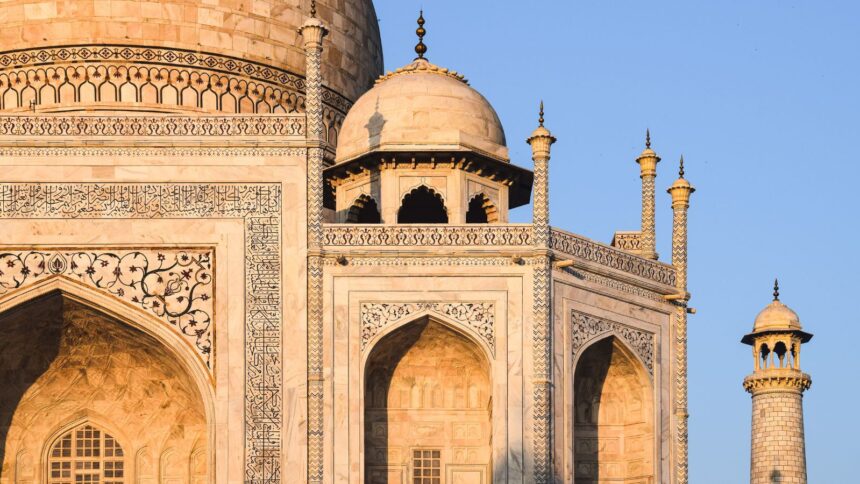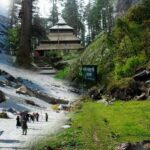India is home to numerous historical places, each carrying a unique story that reflects the nation’s rich heritage and culture. From ancient forts and royal palaces to grand temples and mysterious caves, every monument has tales that transport you back in time. Some recount legendary events and royal sagas, while others carry eerie ghost stories that can send chills down your spine. All these places have been an integral part of India’s history, fascinating visitors with their architectural grandeur and the secrets they hold.
It’s intriguing to know that some of these monuments were built by women—empresses and queens who left their mark on history. Take the famous Humayun’s Tomb in Delhi, built by Empress Bega Begum for her husband. It stands as an early example of Mughal architecture, inspiring future masterpieces like the Taj Mahal.
Let’s delve into the history of India’s remarkable monuments and uncover the captivating and mysterious stories behind each one!
1. Taj Mahal, Agra
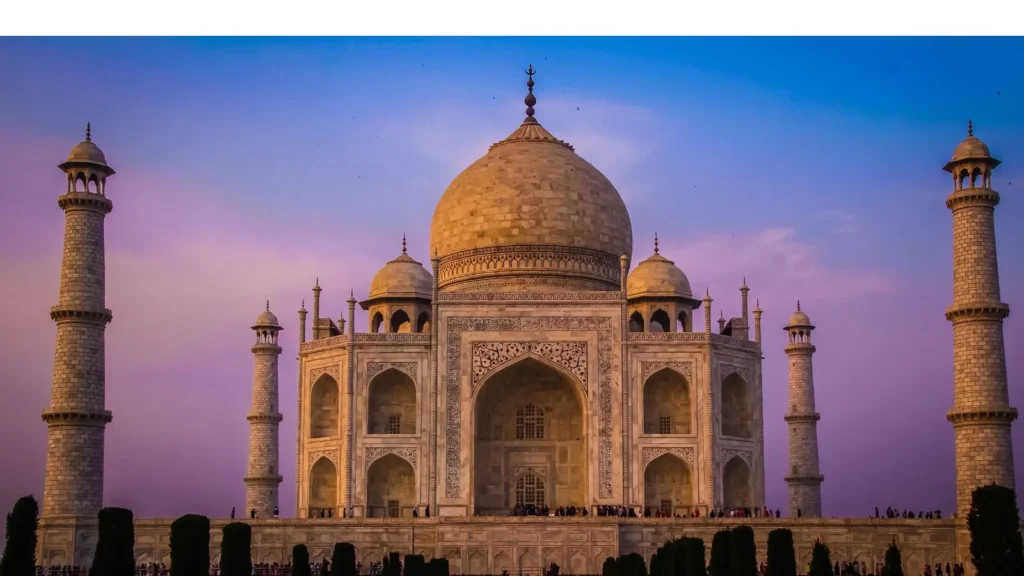
The Taj Mahal in Agra is one of the most famous historical places in India, built by the Mughal Emperor Shah Jahan in the loving memory of her wife, Mumtaz Mahal. It falls in the top India historical sites list and has been an epitome of beauty and love.
Built in 1632 and taking nearly 22 years to complete, the monument still stands tall in all its glory and charm, drawing hundreds of tourists each week to witness the historical marvel.
It is the best option for a weekend getaway from Delhi, contributing largely to historical tourism in India. It is one of the seven wonders of the world. As per the legend, it is believed that after the completion of the monument, the Mughal emperor cut off the hands of all the workers so that no one could build anything like that ever again.
Entry Fee:
Indians: INR 40
Foreigners: INR 1000
Closing Time: 6 pm
2. Agra Fort, Agra
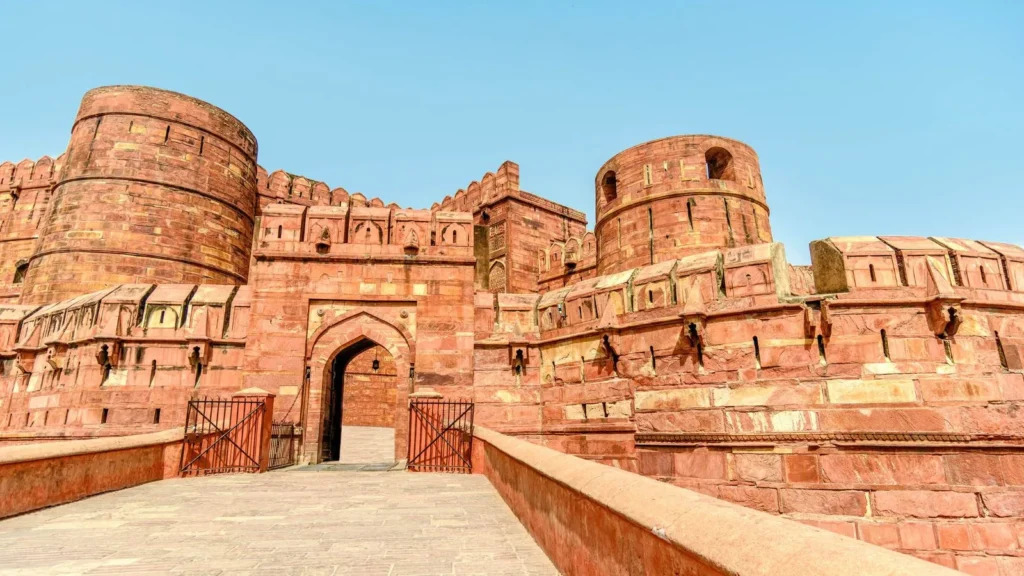
If you’re eager to dive deeper into Mughal history, a visit to Agra Fort is a must. Known as one of India’s remarkable historical places, Agra Fort was built in 1665 by Emperor Akbar using striking red sandstone. This majestic fort has two main gates: the Amar Singh Gate and the Delhi Gate. To truly experience the ancient city within—complete with mosques, gateways, courts, and winding passages—enter through the Amar Singh Gate, which leads you into the heart of this grand Mughal fortress.
Agra Fort, celebrated for its architectural beauty, was also a filming location for the movie Jodha Akbar, featuring Hrithik Roshan and Aishwarya Rai. It remains one of Agra’s most captivating attractions, inviting visitors to step back into an era of grandeur.
Entry Fees:
- Indians: INR 40
- Foreigners: INR 550
Opening Time: 6 am
3. Red Fort
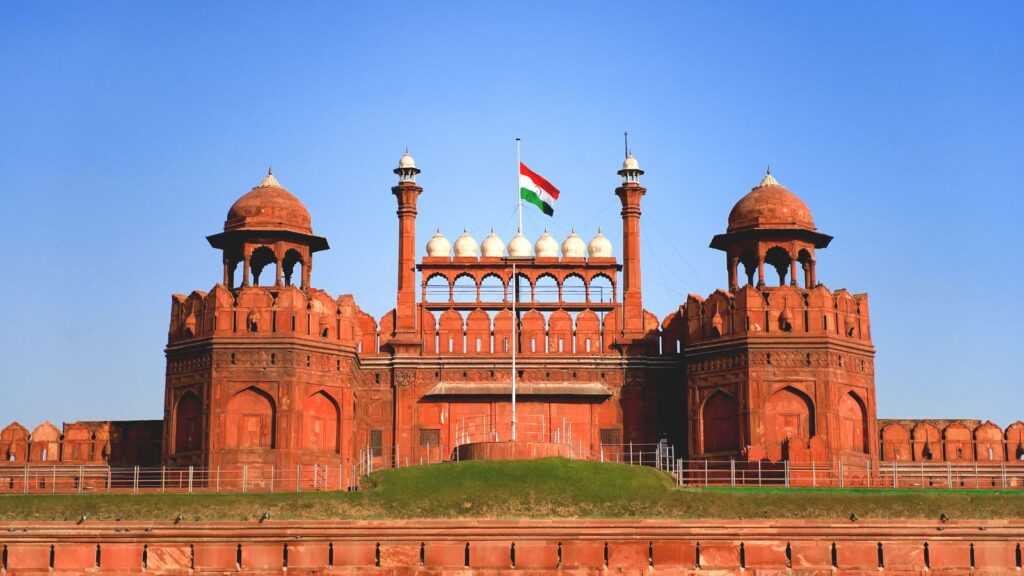
The construction of the Red Fort commenced in 1638 and took nearly a decade to complete by 1648. Built when Shah Jahan shifted the capital from Agra to Delhi, this iconic fort was originally known as Qila-e-Mubarak. As one of the most famous historical places in India, the Red Fort significantly contributes to the country’s historical tourism and serves as the venue for the President of India’s annual speech on Independence Day.
Interestingly, the fort was initially white; however, during British rule, it was painted red to cover the crumbling white limestone. Today, it ranks among the top historical sites in India. Visitors can explore the magnificent Rang Mahal, where the wives, mistresses, and maids of the Mughal emperor once resided.
Entry Fees:
- Indians: INR 10
- Foreigners: INR 250
Opening Time: 9:30 am
Closing Time: 4:30 pm
Please note that the monument is closed on Mondays, so plan your visit accordingly.
4. Qutub Minar, Delhi

Qutub Minar, built by Mughal Emperor Qutub Uddin Aibak, is renowned as one of the finest examples of Indo-Muslim architecture. The minaret showcases intricate detailing across its storeys, constructed from striking red sandstone. The embellishments predominantly feature inscriptions in Nagari and Arabic, with verses from the Quran elegantly etched on its walls.
Named after the Mughal ruler Qutub Ud-din Aibak, this stunning monument was completed in 1193. It also houses Quwattul Islam, the first mosque in India, situated at the foot of the Qutub Minar, further solidifying its status as one of India’s most popular historical places.
One of the most fascinating aspects of this monument is its iron pillars, which have remarkably remained rust-free for over 2000 years—a true testament to ancient craftsmanship. Visitors can enjoy a mesmerizing light show every evening during the Qutub Minar Festival in October and November, starting at 6:30 pm and lasting until 8 pm.
Entry Fees:
- Indians: INR 10
- Foreigners: INR 250
Opening Time: 7 am
Closing Time: 5 pm
5. Humayun’s Tomb, Delhi

One of the most fascinating aspects of Humayun’s Tomb is that it was commissioned by the Mughal Emperor Humayun’s wife, Hamida Banu Begum, in the 15th century. This magnificent structure is celebrated as a pinnacle of Indian architecture, featuring elaborate corridors, intricately designed kiosks, stunning domes, and exquisite detailing. Humayun’s Tomb holds a significant place on the list of India’s historical sites, drawing hundreds of tourists each year and contributing richly to historical tourism in the country.
Notably, it is believed that Humayun’s Tomb served as an inspiration for the construction of the Taj Mahal, which is undoubtedly one of the most iconic historical places in India.
Entry Fees:
- Indians: INR 40
- Foreigners: INR 510
Opening Time: 7 am
Closing Time: 7 pm
Please note that the monument is closed on Fridays.
6. Fatehpur Sikri, Uttar Pradesh
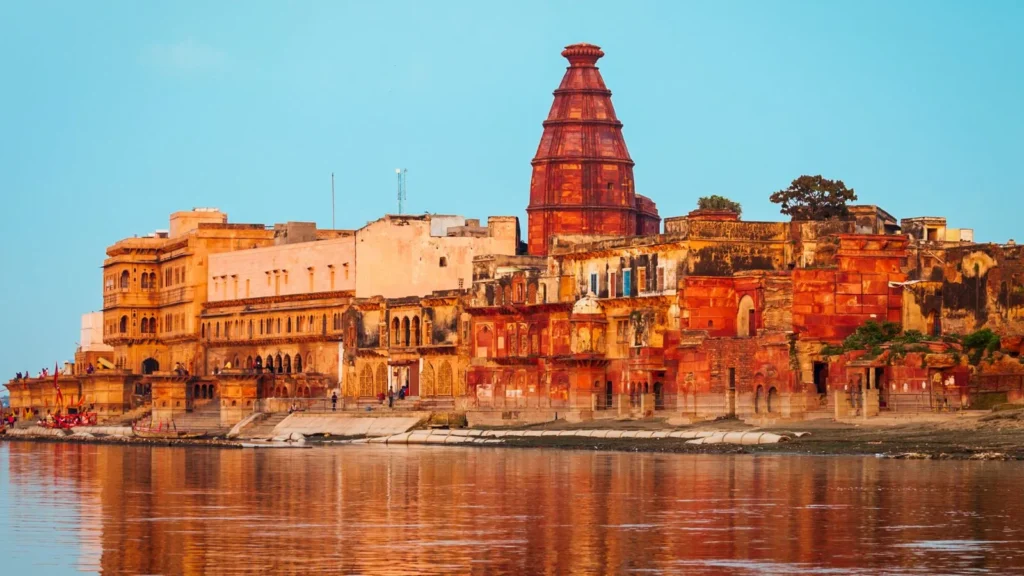
Fatehpur Sikri, the former capital of the Mughal Empire during Emperor Akbar’s reign, is a remarkable Royal City located in Uttar Pradesh. This historical site is renowned for its numerous palaces, mosques, and other architectural marvels that hold great historical and cultural significance, making it one of the most popular historical places in India.
Established between 1571 and 1573 AD, Fatehpur Sikri was meticulously planned, showcasing the grandeur of Mughal architecture. However, the city was eventually abandoned due to a severe water shortage. Interestingly, many women who were unable to conceive would visit the tomb of the esteemed Sufi Saint Salim Chisti, praying for blessings of motherhood.
Entry Fees:
- Indians: INR 40
- Foreigners: INR 510
Opening Time: 6 am
Closing Time: 6 pm
Please note that the monument is closed on Fridays.
7. Hawa Mahal, Jaipur
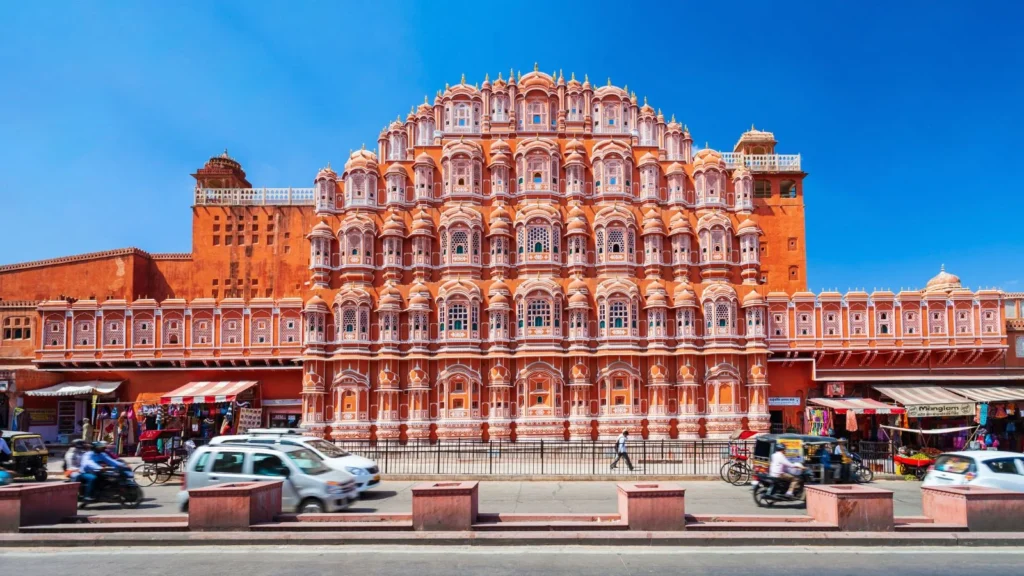
While many are familiar with the pink city of Jaipur and its iconic Hawa Mahal, few know the rich history behind this remarkable structure and its role as a key historical site in India. Hawa Mahal, meaning “Palace of the Winds,” is distinct from other historical places in India due to its unique architectural features, including 953 intricately designed windows that facilitate abundant ventilation.
Built by Maharaja Sawai Pratap Singh, the upper portion of Hawa Mahal is crafted to resemble a crown, reflecting the ruler’s devotion to Lord Krishna. Interestingly, it is said to be the tallest building in the world without a foundation, with its slightly curved design supporting its pyramidical shape.
Legend has it that the numerous windows were created for the royal ladies, allowing them to observe the outside world while adhering to the practice of purdah, which kept them hidden from public view.
Entry Fees:
- Indians: INR 10
- Foreigners: INR 50
Opening Time: 9:30 am
Closing Time: 4:30 pm
8. Mahabodhi Temple, Bodh Gaya

Maha Bodhi Temple is revered as the site where Lord Buddha attained enlightenment while meditating under the sacred Bodhi Tree. This historic tree still stands near the temple, making it one of the significant historical places in India. According to tradition, the location of the Bodhi Tree is believed to be the last place on Earth to remain when the world comes to an end. The Mahabodhi Temple is recognized as one of the four holy sites in Buddhism, playing a vital role in promoting historical tourism in India.
Entry Fees:
- Indians: None
- Foreigners: None
Opening Time: 5 am
Closing Time: 9 pm
Suggested Read :- Beware! 10 Travel Scams
9. Victoria Memorial, Kolkata

The Victoria Memorial, one of India’s most cherished historical sites, stands as a testament to British colonial architecture and a symbol of India’s rich history. Located in Kolkata, this grand white marble monument was commissioned by Lord Curzon, the Viceroy of India, to honor Queen Victoria. Though the concept was Lord Curzon’s, the iconic design came from Sir William Emerson, blending British and Mughal architectural styles into a masterpiece that attracts millions of visitors each year.
A Walk Through History
The surrounding lush gardens create a serene setting, inviting visitors to appreciate the grand exterior before stepping inside the museum. Once inside, you’re immersed in India’s colonial past. The museum houses an impressive collection of artifacts from the British era, including weapons, royal ornaments, vintage clothing, and numerous paintings that depict moments from the time of British rule in India. The intricate detail and historical value of each exhibit make it a must-visit for history enthusiasts and travelers alike.
Highlights of the Victoria Memorial Museum
One of the museum’s standout pieces is a painting of the Prince of Wales’s visit to Jaipur in 1876, an exquisite work created by the Russian artist Vasily Vereshchagin. This painting is a rare portrayal of an event that symbolized British-Indian relations during that era, capturing the grandeur and intricacies of the time.
Visitor Information
Entry Fees:
- Indian Visitors: INR 20
- Foreign Visitors: INR 200
Timings:
- Opening Time: 5:30 AM
- Closing Time: 6:15 PM
10. Jallianwala Bagh, Punjab
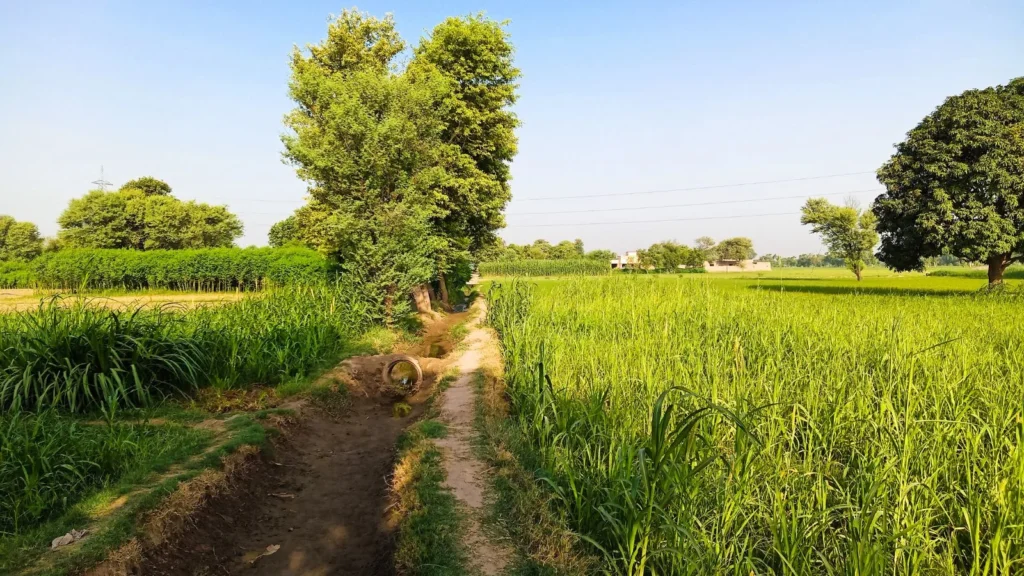
Jallianwala Bagh stands as one of India’s most somber historical sites, forever etched in the country’s collective memory due to the tragic events that unfolded here. Located near the Golden Temple in Amritsar, this memorial marks the site of the horrific Jallianwala Bagh massacre. It was here, in 1919, that General Dyer ordered his troops to open fire on a peaceful gathering, leading to the deaths of thousands of innocent men, women, and children.
The grounds of Jallianwala Bagh cover approximately 6.5 acres, preserving the area where the massacre took place. The bullet marks on the walls and the martyr’s well stand as haunting reminders of the bloodshed that ignited a stronger fight for India’s independence. Following this tragedy, there was an intense backlash, and the desire for freedom only grew stronger across the nation.
The Jallianwala Bagh memorial, designed by architect Benjamin Polk, was established in 1961 to honor the memory of those who lost their lives. Today, visitors come from around the world to pay their respects and to reflect on the sacrifices that contributed to India’s path to independence.
Suggested Read :- Top 10 Things to Do in Delhi
Visitor Information
Entry Fees:
- Indians: Free
- Foreigners: Free
Timings:
- Opening Time: 6:30 AM
- Closing Time: 7:30 PM
11. Golden Temple, Punjab
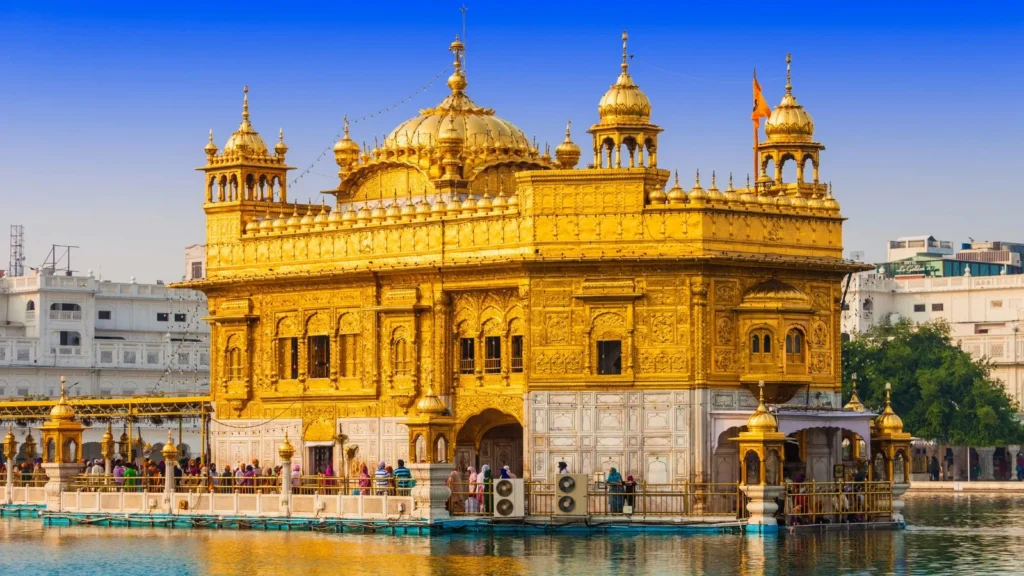
The Golden Temple, or Harmandir Sahib, located in Amritsar, Punjab, is among the most revered Gurudwaras globally, attracting countless pilgrims from all faiths each year. Known for its deep spiritual significance, the temple offers an experience of tranquility and devotion, making it one of India’s most cherished historical sites. Originally constructed in 1599 by Guru Ram Das, the temple was later magnificently rebuilt in 1830 by Maharaja Ranjit Singh, who adorned it with marble and gold. The Golden Temple’s serene setting and sacred atmosphere make it a must-visit for anyone seeking inner peace and spiritual connection.
Visitor Information
Entry Fees:
- Indians: Free
- Foreigners: Free
Timings:
- Opening Time: Varies each month
- Closing Time: Varies each month
12. India Gate, Delhi
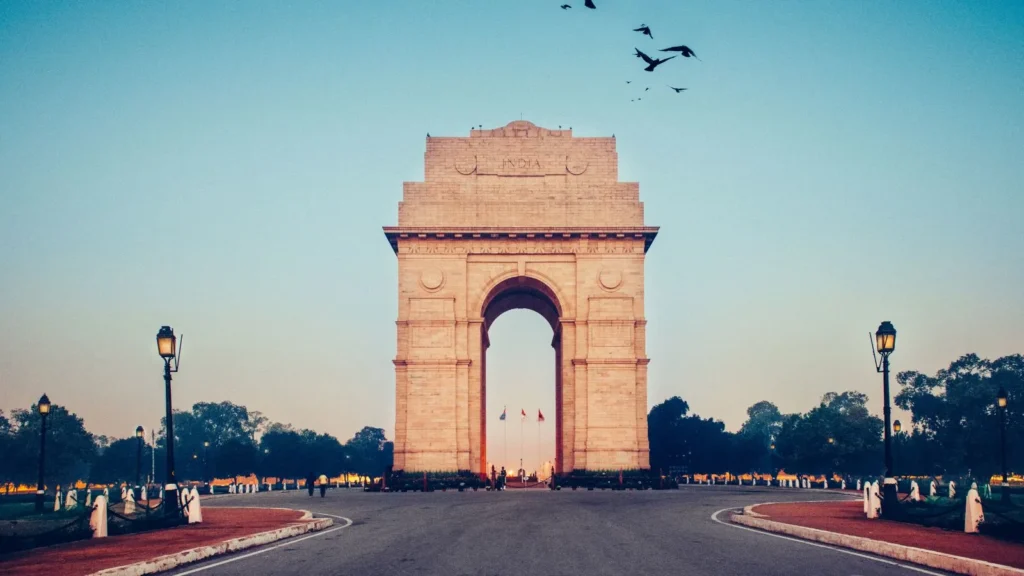
India Gate, located in the heart of New Delhi, is one of India’s most beloved historical landmarks, admired by locals and tourists alike. This iconic structure is often compared to the Arch of Constantine in Rome and the Arc de Triomphe in Paris. Designed by Sir Edwin Lutyens and completed in 1931, India Gate was built to honor the 82,000 Indian and British soldiers who served in World War I, as well as the 13,300 soldiers martyred in the Third Anglo-Afghan War.
Each year, the Republic Day parade, held here with grandeur, draws hundreds of spectators who gather to witness the patriotic celebration. India Gate is especially enchanting at night, illuminated beautifully, creating a peaceful ambiance where visitors can spend a memorable evening with family and friends.
Visitor Information
Entry Fees:
- Indians: Free
- Foreigners: Free


